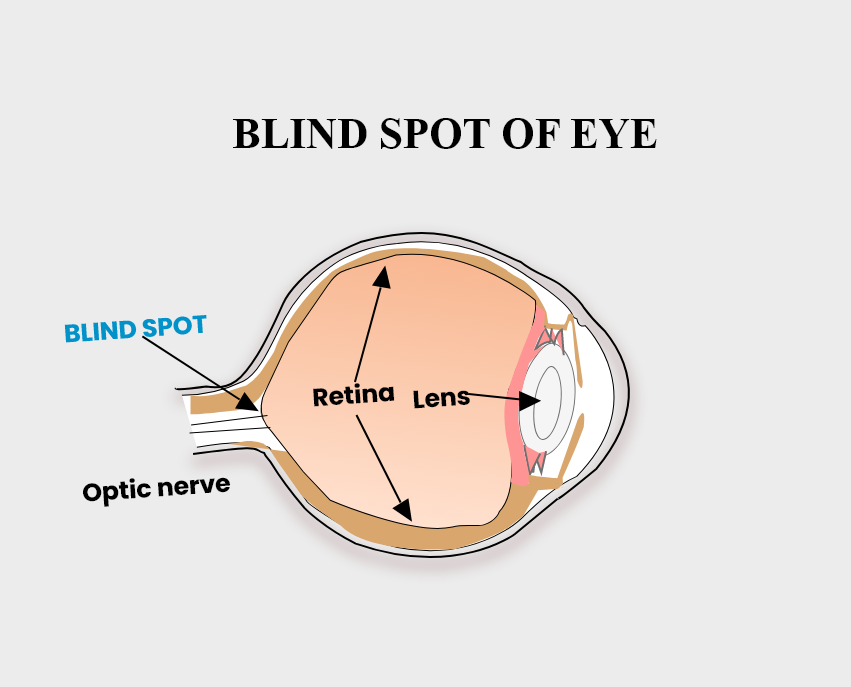
No image formation occurs on the blind-spot of the retina because
(a) It is not present on the optical axis of the eye
(b) Here, cones and rods are absent
(c) On this part, only cones are present
(d) The nerve fibers of this region do not contribute to the formation of the optic chiasma
Answer
563.4k+ views
Hint: The blind spot or Punctum caecum is a place in the posterior region of the retina where no image formation takes place. This is due to the absence of certain types of cells that detect light and colors.
Complete Step by Step Answer:
The blind spot of the eye is a small portion of the visual field that corresponds to the position of the optic disk seen in the retina. In the blind spot, there are no photoreceptors i.e. neither rods or cones, and, therefore, there is no image formation in this area. This is because of the lack of both rods and cones which means no detection of both light or colors.

So, the correct answer is, “Here, cones and rods are absent.”
Additional Information:
Rodes
- Rodes are distributed over most of the retina except near the fovea.
- No rods at all in the central part of the fovea.
- Rods are connected in groups, there are far fewer optic nerves going to the brains than rods.
- Rod’s vision detects edges and motion very well.
- Rod pigments are bleached by light and are less effective in bright light, rods take about 20 to 30 minutes of dark adaptation before they are most efficient.
Cones
- There is a concentration in the fovea, a region about 1.5 mm in diameter. Most acute visions are limited to foveola, covering nearly 0.4 mm.
- Color vision is provided by three types of cones with different colored light absorption red, green, and blue cones.
Note:
- Although all vertebrates have the blind spot in the retina, cephalopods which have only superficially similar eyes, lack this area. In these organisms, the optic nerve approaches the receptors from behind which results in no break in the retina.
- The blind spot of the right eye is present slightly to the right of the center of vision and that of the left eye is present slightly to the left of the center of vision. When both eyes are open, the blind spots are practically not perceived as the visual fields of both the eyes overlap.
Recently Updated Pages
Master Class 12 Business Studies: Engaging Questions & Answers for Success

Master Class 12 Economics: Engaging Questions & Answers for Success

Master Class 12 English: Engaging Questions & Answers for Success

Master Class 12 Maths: Engaging Questions & Answers for Success

Master Class 12 Social Science: Engaging Questions & Answers for Success

Master Class 12 Chemistry: Engaging Questions & Answers for Success

Trending doubts
What is meant by exothermic and endothermic reactions class 11 chemistry CBSE

Which animal has three hearts class 11 biology CBSE

10 examples of friction in our daily life

One Metric ton is equal to kg A 10000 B 1000 C 100 class 11 physics CBSE

1 Quintal is equal to a 110 kg b 10 kg c 100kg d 1000 class 11 physics CBSE

Difference Between Prokaryotic Cells and Eukaryotic Cells




